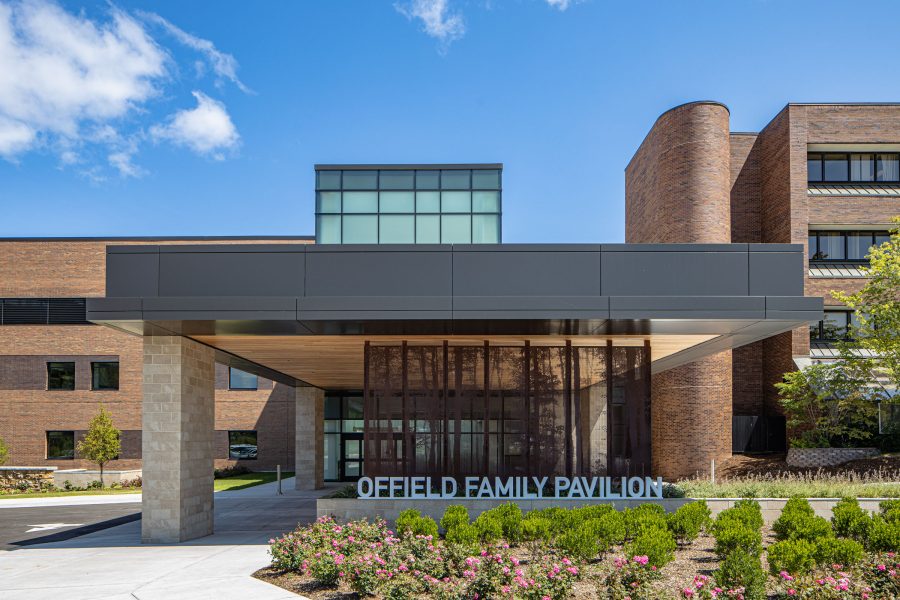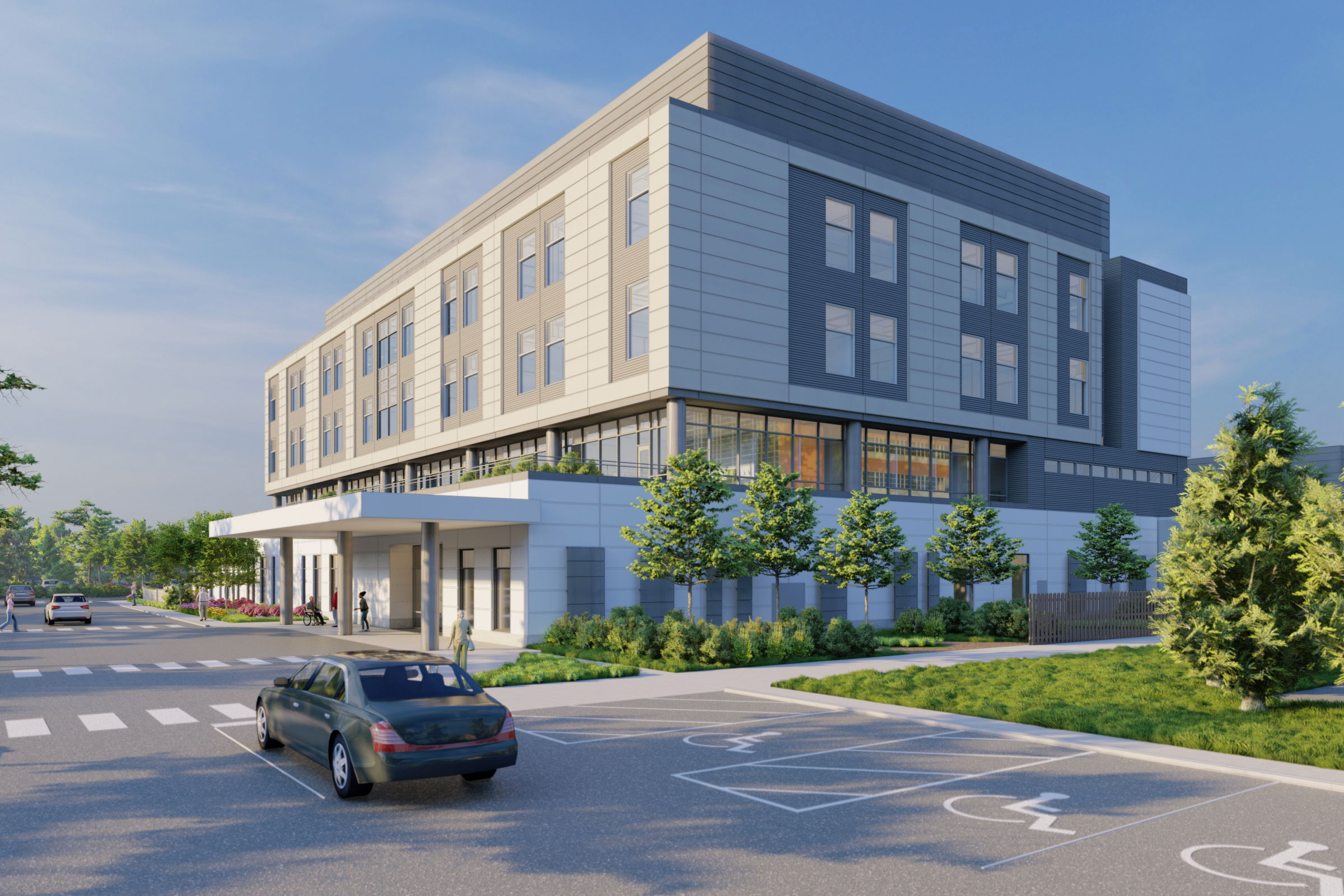Story at a glance:
- SmithGroup on reconsidering how health care environments can be designed to stand up to hurricanes, flooding, and more.
- A new patient tower designed by SmithGroup for Cape Cod Hospital included significant infrastructure changes to make the project more resilient, given its close proximity to Lewis Bay and the Atlantic Ocean.
Address aging infrastructure, evaluate your systems, and understand the conditions that can’t be designed for and make emergency plans accordingly—these are among the directives SmithGroup shares in a recent post by Greg Heppner, senior principal, called “Building a Climate-Resilient Healthcare System: What is Your Plan?”
The leading architecture firm with 20 offices and more than 1,400 employees is increasingly prioritizing strong, sustainable building materials like brick as they rebuild and renovate health care and other projects in the face of increasing storms with high winds, hail, and flooding, to name a few issues.
“Climate change is something we’ve known about for a long time, and the design community and regulatory community is finally beginning to get around to effectively considering it and addressing it,” Heppner says. “We have clients who are beginning to require it as part of their project RFPs. Regulatory agencies, building departments, and zoning departments are beginning to incorporate it in their building regulations. It’s something the design community has to deal with.”

SmithGroup designed the Cape Cod hospital project to address sea-level rise, wind-borne projectiles, and provide hurricane storm-surge mitigation up to a Category 4. Rendering courtesy of SmithGroup
In summer 2024 SmithGroup was working on multiple health care projects to address the impacts of climate change. This included a new four-story patient tower with a cancer center and two floors of patient rooms at Cape Cod Hospital, a facility less than 500 feet from where the harbor connects to Lewis Bay and feeds into the Atlantic Ocean. “Any hurricane coming up the East Coast and slamming into the southern coast of Cape Cod will have a direct effect on this campus and specifically our new buildings,” Heppner says.
The project was designed to address sea-level rise, wind-borne projectiles, and provide hurricane storm-surge mitigation up to a Category 4. The team isolated all of the emergency generators above the anticipated flood level and elevated the site to keep the first floor of the building out of the 500-year flood zone.
“Significant infrastructure changes were made to this specific building to keep it resilient,” Heppner says, adding that they also chose not to have a basement, where health care facilities often put their mechanical, electrical, and plumbing systems to keep them out of sight. “Those tend to turn into swimming pools when a site gets flooded, and that puts critical infrastructure directly in harm’s way.”
Another project SmithGroup is working on currently, the Myrah Keating Smith Health Center on St. John in the US Virgin Islands, was put out of service in 2017 after Hurricane Maria ripped out the corroded base attachments of the rooftop equipment, causing those units to fail. The metal boxes were blown across the roof, ripping the EPDM membrane to shreds with their sharp edges and flooding the interior. The largest health care facility on the island was permanently closed when it was needed most.
“Something as simple as just using stainless steel attachments where they face the environment—and if you’re in a salt air marine environment using stainless steel almost has to be a given because even galvanized steel with a sacrificial coating will give way so much earlier than stainless steel,” Heppner says. “I won’t say anything is perfect as a material. Maintenance of material, constant inspection, and upkeep is essential to maintain the resilience of your facility.”

In Petoskey, Michigan, SmithGroup created a more modern front door for the campus at McLaren Northern Michigan using brick to help integrate the South Tower addition with the existing buildings. The project was part of a $1 billion facilities upgrade for the health care system. Photo by Jason Robinson Photography

